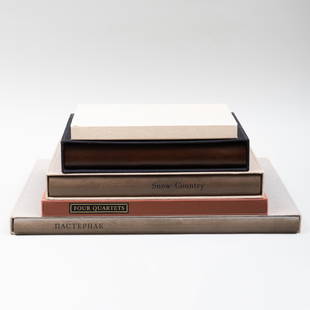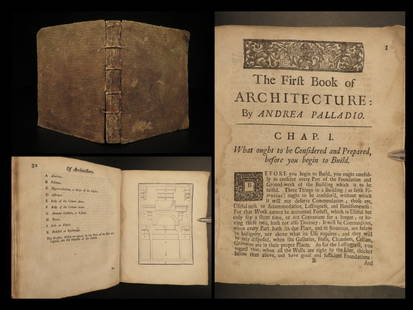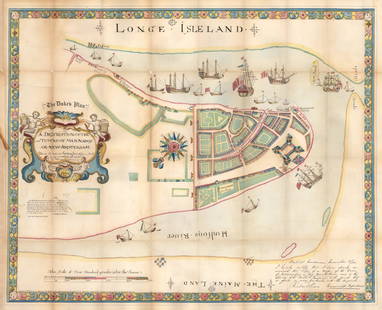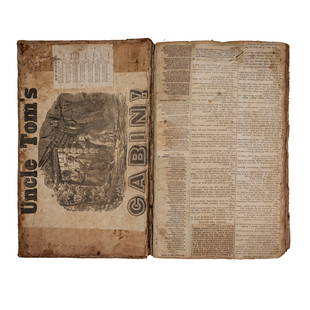

 Discovery- InteriorsBonhamsSponsored.Your ad here?
Discovery- InteriorsBonhamsSponsored.Your ad here?



Discovery- Interiors
Bonhams
Sponsored.Your ad here?


 Discovery- InteriorsBonhamsSponsored.Your ad here?
Discovery- InteriorsBonhamsSponsored.Your ad here?



Discovery- Interiors
Bonhams
Sponsored.Your ad here?

Five Year Plan Kulagina Klutsis Constructivism
Similar Sale History
View More Items in Books, Magazines & Papers
Related Books, Magazines & Papers
More Items in Books, Magazines & Papers
View MoreRecommended Collectibles
View More







Item Details
Description
Original Dutch publication on the 5 year plan in the USSR. Published in 1932 by De Baanbreker-NV. Photomontage cover by Valentina Kulagina, wife of Gustav Klutsis.64 pages with colour insert advertising Kostja Rjabtsew op de universiteit. Fair condition, front cover separated, folds and tears, soiling, minor loss on margins, 22x14.5cm.Valentina KulaginaFrom Wikipedia, the free encyclopediaValentina Kulagina (1902–1987[1]) was a Russian painter and book, poster, and exhibition designer. She was a central figure in Constructivist avant-garde in the early 20th century alongside El Lissitzky, Alexander Rodchenko other and her husband Gustav Klutsis. She is known for the Soviet revolutionary and Stalinist propaganda she produced in collaboration with Klutis.Biography[edit]Kulagina left State Free Art Studios and entered the state-run art school VKhUTEMAS in 1920 at the urging of teacher Gustav Klutsis, whom she had recently met. On February 2, 1921, the couple wed and lived together at the school's headquarters.[2] In 1928, Kulagina joined the artists' group October, of which her husband was already a member. In 1930 she designed a poster for International Working Women's Day, employing avant-garde techniques, typography, lithography, and photomontage. Starting in 1932 Kulagina saw her works frequently rejected by the Communist Party's Central Committee.[3]Her work as a designer began before she graduated the school, with the Soviet Pavilion at the Pressa exhibition in Cologne including areas which she designed. Later, she worked for IZOGIZ (the State Art Publishing Agency) and VOKS (the All-Union Society of Cultural Relations with Abroad) and VSKhV (The All-Union Agricultural Exhibition).Klutsis' and Kulagina's work was complementary, and their style of photomontage combined with graphic work saw them implemented as official revolutionary poster producers for the Communist Party under Stalin. On January 17, 1938, Klutsis was arrested as he prepared to leave for the New York World's Fair. Kulagina was never told the truth as to what happened to her husband, believing for the remainder of her life that he had died of a heart attack while imprisoned.[4] In 1989, two years after her death in Moscow, it was discovered that he had been executed by order of Stalin, very soon after his arrest.Work[edit]Within the early formation of Soviet Union, politics was a potent influence on the artistic community, and the art and design produced during this early period is known for its revolutionary zeal and joyous utopianism. With this subject matter, Kulagina's work combined drawing and graphic symbolism with photomontage techniques (that had been pioneered by her husband). It was a combination that distinctively separated her work from Klutsis'. Klutsis and Kulagina never worked on projects together, their work was collaborative nevertheless, and was strengthened by one being around the other.Though Klutsis and Kulagina are known for these official pieces for the government, they also ran a personal art and photography practice, utilising styles such as superimposition and photomontage, often portraits of each other.As the political environment in Russia began to dissolve in the 1930s, Klutsis and Kulagina came under increasing pressure to limit the subject matter and humour that they had employed for official posters and graphic work, and their posters came to represent Stalinist visual rhetoric and propaganda rather than its original revolutionary hope.Constructivism was an artistic and architectural philosophy that originated in Russia beginning in 1919 and was a rejection of the idea of autonomous art. The movement was in favour of art as a practice for social purposes. Constructivism had a great effect on modern art movements of the 20th century, influencing major trends such as the Bauhaus and De Stijl movements. Its influence was pervasive, with major impacts upon architecture, graphic design, industrial design, theatre, film, dance, fashion and to some extent music.
Buyer's Premium
- 0%
Five Year Plan Kulagina Klutsis Constructivism
Estimate £120 - £200
2 bidders are watching this item.
Shipping & Pickup Options
Item located in London, ukSee Policy for Shipping
Payment

TOP






















![[MILITARY]. WINDHAM, William. A Plan of Discipline,: [MILITARY]. WINDHAM, William. A Plan of Discipline, Composed for the use of the Militia of the Country of Norfolk. London: printed for J. Shuckburgh, 1759. 3 parts in one volume, 4to. 52 plates (3 fol](https://p1.liveauctioneers.com/928/212515/108628864_1_x.jpg?height=310&quality=70&version=1627420959)



![Five Titles on English History: 11 volumes total, including: [Memoirs of Count Grammont] by Anthony Hamilton, London: Printed for William Miller and James Carpenter, 1811, two volumes (complete), bound in full red leather, covers wi](https://p1.liveauctioneers.com/33/260783/135836336_1_x.jpg?height=310&quality=70&version=1662513112)
















































![George Washington Signed Discharge: Partly printed discharge document signed by George Washington, as Commander in Chief of the Armies of the United States. Newburgh, [New York], 4 January 1783. 1 page, ## x ## in. Undersigned by Washin](https://p1.liveauctioneers.com/7226/322253/173251475_1_x.jpg?height=310&quality=70&version=1710004847)


